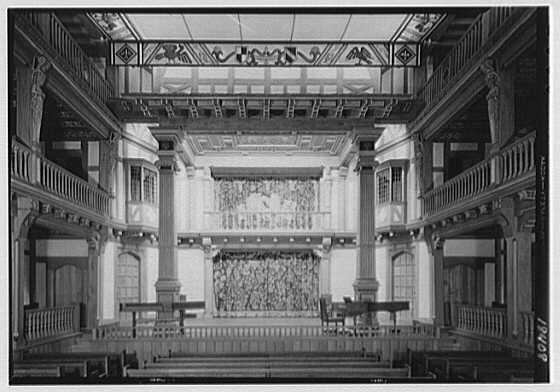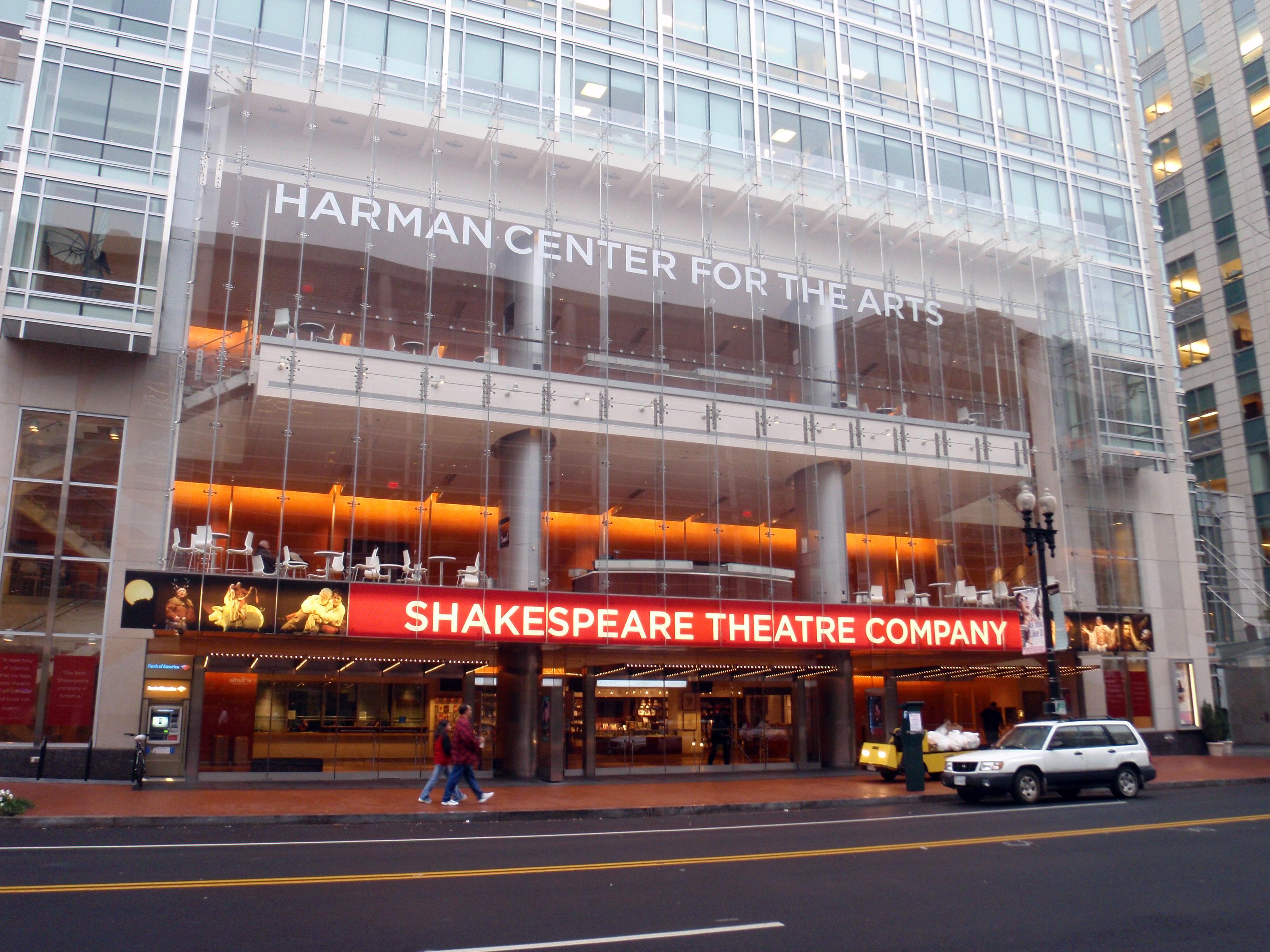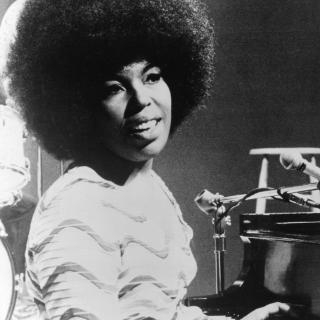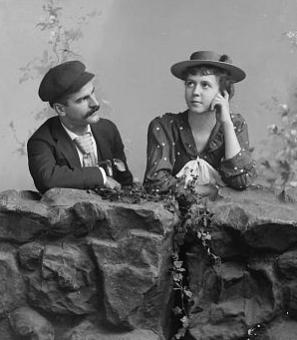The Shakespeare Theatre Company's Second Act
“Farewell to the tiny 243-seat Folger box, dark with aged wood and half a century without sunlight. Farewell to the seats that made your back ache on a bad night, to the onstage pillars that countless set designers tried unsuccessfully to make disappear, to the cozy seating that once became so intimate a patron was struck by a flying sword. Farewell to the neighborhood of Capitol Hill, the neighbors at the Supreme Court, the Library of Congress, Jimmy T’s coffee shop on Fifth Street and the grand marble steps that served many as a lobby on fair nights.”
--The Washington Post, March 3, 1992
To be, or not to be on Capitol Hill: that was the question. For D.C.’s Shakespeare Theatre, the answer was not to be. After a six-year residency at the Folger Shakespeare Library, located behind the Jefferson Building of the Library of Congress, the theatre company set off in 1992 to make a new home for itself in Penn Quarter downtown at the former site of Lansburgh’s Department store.
In 1970, the Folger Shakespeare Library on the Hill converted its Elizabethan theatre replica, built in 1932 and never intended for use, into a functioning playhouse.[1] Shortly thereafter, the Folger Theatre Group was created to perform in the new space.[2] While construction was taking place, the theatre group performed a number of successful shows at other nearby locations, including a performance of the “rock musical Dionysus Wa You!, adapted from Euripides’ The Bacchae, in which the god of wine and ecstasy drives his followers to madness.”[3]
The original Folger Theatre Group dissolved in early 1985, and reestablished itself in November of the same year as The Shakespeare Theatre at the Folger—though it now operated independently from the Library except for using its performance space.[4] The troupe hired Michael Kahn as its artistic director in 1986, and put on Romeo and Juliet as its first official production on October 14, 1986.
While the theatre company was carrying on its residency at the Folger, a new renovation project on the former Lansburgh’s Department Store, located on Seventh St. NW, was about to begin. Lansburgh’s, a household name in the District, closed in 1973 after an impressive 113-year run. In 1987, the Pennsylvania Avenue Development Corporation selected Massachusetts developer, Gunwyn Co., to transform the old department store into a large complex of residences, as well as an arts center—including the construction of the 400-seat Lansburgh Theatre.
Back at the Folger, the new direction that Kahn brought to the theatre company was starting to expand its audience exponentially—making the 243-seat theatre “unworkably small.”[5] For this reason, Kahn and the theatre board thought it best to look for a larger space—reassuringly knowing that the theater and the Folger Library would keep a connection, and that the Library would not suffer financially from the loss of the theatre troupe.
In searching for a new performance space, the Lansburgh Theatre in the development project downtown came to mind. Kahn told the Washington Post that “the Shakespeare Theatre [was] the only organization that ever had “serious conversations” about taking over the Lansburgh Theater,” and on November 7, 1991, the troupe officially secured it.[6]
“‘We just got it two minutes ago,’ Kahn said yesterday, striding happily around the new space, which even under construction, is graceful and intimate…Kahn looked around like a kid who actually got a pony for Christmas. ‘Do I seem giddy?’ he asked. Maybe a little, and with good reason.” [7]
Kahn’s excitement was definitely warranted. The Lansburgh was the first theatre to be built up from the ground in Washington since the Kennedy Center in 1971, and had almost double the Folger’s seating, 300 indoor parking spaces, and thankfully lacked the stage-blocking pillars of the Folger.[8] Despite these desirable features, the move downtown was a risky one.
Penn Quarter had, for many years, been the heart of the District thanks to its central location, famous department stores, restaurants, and vibrant entertainment. By the 1950s and 1960s, however, much of the population living downtown left for the suburbs, forcing many businesses in the area to close. This migration correlated with an increase in the popularity of cars, and the eventual closing of D.C.’s famed streetcar system. Lack of activity downtown caused it to be undesirable, and the area no longer attracted visitors.
President John F. Kennedy noticed the dilapidated state of Pennsylvania Avenue during his 1961 inaugural parade, and attempted to start a revitalization project. This took little effectual form until the Pennsylvania Avenue Development Corporation (PADC) was established in April 1973. By the time that the PADC began the Lansburgh development project in 1987, downtown was only just beginning to come alive again, thereby making Kahn’s decision to move the Shakespeare Company there, what former D.C. mayor Anthony Williams called, “a bold move” that made “a big bet on the city.”[9] Kahn and the company moved forward, however, and hoped that the new theatre would spark a revitalization of Penn Quarter.
After weeks of shifting subscribers, organizing ticket dates, and securing a shuttle to transport confused audience members from the Folger to Seventh Street, they were ready for opening night at the Lansburgh.[10]
“We’ve always been thought of as the Folger. I guess we’re the Shakespeare Theatre now," said Kahn." [11]
With its new name, The Shakespeare Theatre Company inaugurated the Lansburgh Theatre on March 3, 1992 with a production of Much Ado About Nothing, and a “capacity crowd that spilled over for a post-performance party.”[12]
The crowd was filled with awe as they entered the new space. Senator Daniel Patrick Moynihan of New York called the Lansburgh “everything postmodernism is supposed to be.” Supreme Court Justice Anthony Kennedy remarked, “The old theatre was so small you had to work to become detached. This theatre is the standard calculus, the correct relationship of the audience to the stage.” Eric Weinmann, a longtime subscriber and former head of the Friends of the Folger, said, “This is one of the rare situations where everybody wins. You can park, there’s a nice lobby, it has wonderful sightlines, and the [Folger] library will get [its] space back.”[13]
Before the “ruffled dark-rose-colored curtain” went up, Kahn elicited a laugh from the audience saying, “For those of you who miss the posts, we’ll sell you little replicas and you can walk around with them in front of your face.”[14] It seemed the audience did not miss the posts, however, and they enjoyed a successful performance of the Shakespeare comedy, followed by a lobby reception complete with “trickling water fountains [that] had appeared on long buffet tables.”[15]
Kahn’s gamble in moving the theater company downtown ended up sparking a major revitalization of Penn Quarter both in business and the arts. Kahn made the Lansburgh available for community groups looking to perform, and was also instrumental in establishing ways to offer free or lower cost performances to residents and visitors alike, making Shakespeare accessible and exciting.
Although the Shakespeare Theatre Company would miss the hustle and bustle of Capitol Hill, it was ready to make a permanent home downtown—which it established quickly. The renowned Shakespeare Theatre expanded its one theatre into two in 2007 with the construction of the 774-seat Sidney Harman Hall. Both theatres make up the Harman Center for the Arts which continues to entertain, educate, and give back to downtown today.[16]
“Things growing to themselves are growth’s abuse: Seeds spring from seeds and beauty breedeth beauty.” –William Shakespeare, “Venus and Adonis”
Footnotes
- ^ Rose, Lloyd. 1991. “And Now, Shakespeare At the Lansburgh: After 21 Years at the Folger, Theater to Move Downtown in February.” The Washington Post (1974-Current File); Washington, D.C., November 8, 1991, sec. Style. https://search-proquest-com.library.access.arlingtonva.us/hnpwashington….
- ^ “1970–1991-Folger Shakespeare Library.” Accessed June 26, 2018. https://web.archive.org/web/20110217230412/http://www.folger.edu/Conten….
- ^ Ibid.
- ^ Ibid.
- ^ Rose, Lloyd. 1991. “And Now, Shakespeare At the Lansburgh: After 21 Years at the Folger, Theater to Move Downtown in February.” The Washington Post (1974-Current File); Washington, D.C., November 8, 1991, sec. Style. https://search-proquest-com.library.access.arlingtonva.us/hnpwashington….
- ^ Ibid.
- ^ Ibid.
- ^ Ibid.
- ^ Pressley, Nelson. 2017. “Michael Kahn Plots His Shakespeare Theatre Exit for 2019.” The Washington Post (Online); Washington, D.C. February 13, 2017. https://search-proquest-com.library.access.arlingtonva.us/usnews/docvie….
- ^ Rose, Lloyd. 1991. “And Now, Shakespeare At the Lansburgh: After 21 Years at the Folger, Theater to Move Downtown in February.” The Washington Post (1974-Current File); Washington, D.C., November 8, 1991, sec. Style. https://search-proquest-com.library.access.arlingtonva.us/hnpwashington….
- ^ Ibid.
- ^ Rosenfeld, Megan. 1992. “New Boards for the Bard: Curtain Goes Up in Lansburgh Theater.” The Washington Post (1974-Current File); Washington, D.C., March 3, 1992, sec. Style. https://search-proquest-com.library.access.arlingtonva.us/hnpwashington….
- ^ Ibid.
- ^ Ibid.
- ^ Ibid.
- ^ “History & Awards.” Shakespeare Theatre Company. Accessed June 22, 2018. http://www.shakespearetheatre.org/about/history-and-awards/.







![Sketch of the mythical fuan by Pearson Scott Foresman. [Source: Wikipedia]](/sites/default/files/styles/crop_320x320/public/2023-10/Goatman_Wikipedia_Faun_2_%28PSF%29.png?h=64a074ff&itok=C9Qh-PE1)












